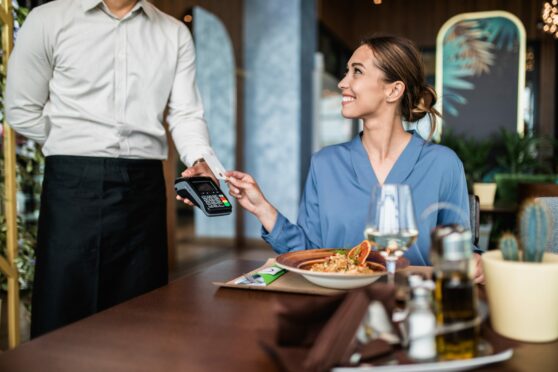
People have been returning to folding money to keep tighter control of their spending as living costs soar but many find it increasingly difficult to pay for goods and services with hard cash.
As prices continues to rise, the Post Office said in recent months it has seen up to a 20% lift in personal cash withdrawals at its branches from 2021 levels.
It has attributed the extra volume to more people turning to cash to help manage budgets.
“Our figures clearly show Britain is anything but a cashless society,” said Martin Kearsley, banking director at the Post Office. “We’re seeing more and more people increasingly reliant on cash as the tried and tested way to manage finances.
“Cash access in every community is critical.”
Personal finance experts say holding notes and coins is still the most effective way of budgeting and controlling how you spend.
However, research by LINK, the UK’s cash access and ATM network, shows nearly half (45%) of people have recently been somewhere where cash payments have been discouraged, or even not been accepted.
The locations where cash acceptance has been the most limited has been car parks, cafes, restaurants and public transport.
With more consumers preferring to pay using contactless cards and digital payments, 47% of those affected said this caused them no inconvenience. However, 49% said being discouraged to pay in cash was inconvenient.
Since the first lockdown in March 2020, LINK has regularly conducted research to understand people’s attitude towards cash use through the pandemic and into the cost-of-living crisis.
Findings include that most people intend to save money, and just under half intend to reduce the cost of their power bills. Around 44% intend to stop eating at restaurants or ordering takeaways, and purchase value brands and/or yellow label goods.
Around one in eight also said they have found it more difficult to keep track of their finances due to using card payments in shops instead of cash, with 16% saying that they are keeping cash at home in case of emergencies.
ATM volumes since the pandemic are on average down by 40%. However, while people are visiting ATMs less frequently, the research shows they are taking out more cash when they do visit. Around £1.6billion is withdrawn from LINK ATMs each week in the UK.
Graham Mott, LINK’s director of strategy, said: “If a shop, pub or restaurant no longer accepts cash or prefers customers to pay using card or mobile payments, we can now see that almost half of people find this problematic.
“We know some people simply prefer using cash, but there are millions who can’t do digital payments, so being unable to pay in notes and coins is still frustrating for some.”
Another barrier to using cash is a continuing increase in bank branch and ATM closures.
The average rate of ATM closures was found to be 18.3% between 2018 and 2022 across all areas of Scotland, according to a study by leading finance experts CMC Markets.
Aberdeen South has seen the biggest switch to a cashless approach, with a 36% reduction in ATMs in the region – which works out to 36 ATM closures overall.
Michael Hewson, chief market analyst at CMC Markets said: “By analysing the rate at which ATMs have closed over the past four years, we were able to see which areas are likely to go cashless first, as well as the areas with the easiest access to cash machines.
“With older generations being more reliant on cash, increasing closures of ATMs may exacerbate the digital divide unless banks continue with measures that aim to improve digital literacy.”

Enjoy the convenience of having The Sunday Post delivered as a digital ePaper straight to your smartphone, tablet or computer.
Subscribe for only £5.49 a month and enjoy all the benefits of the printed paper as a digital replica.
Subscribe